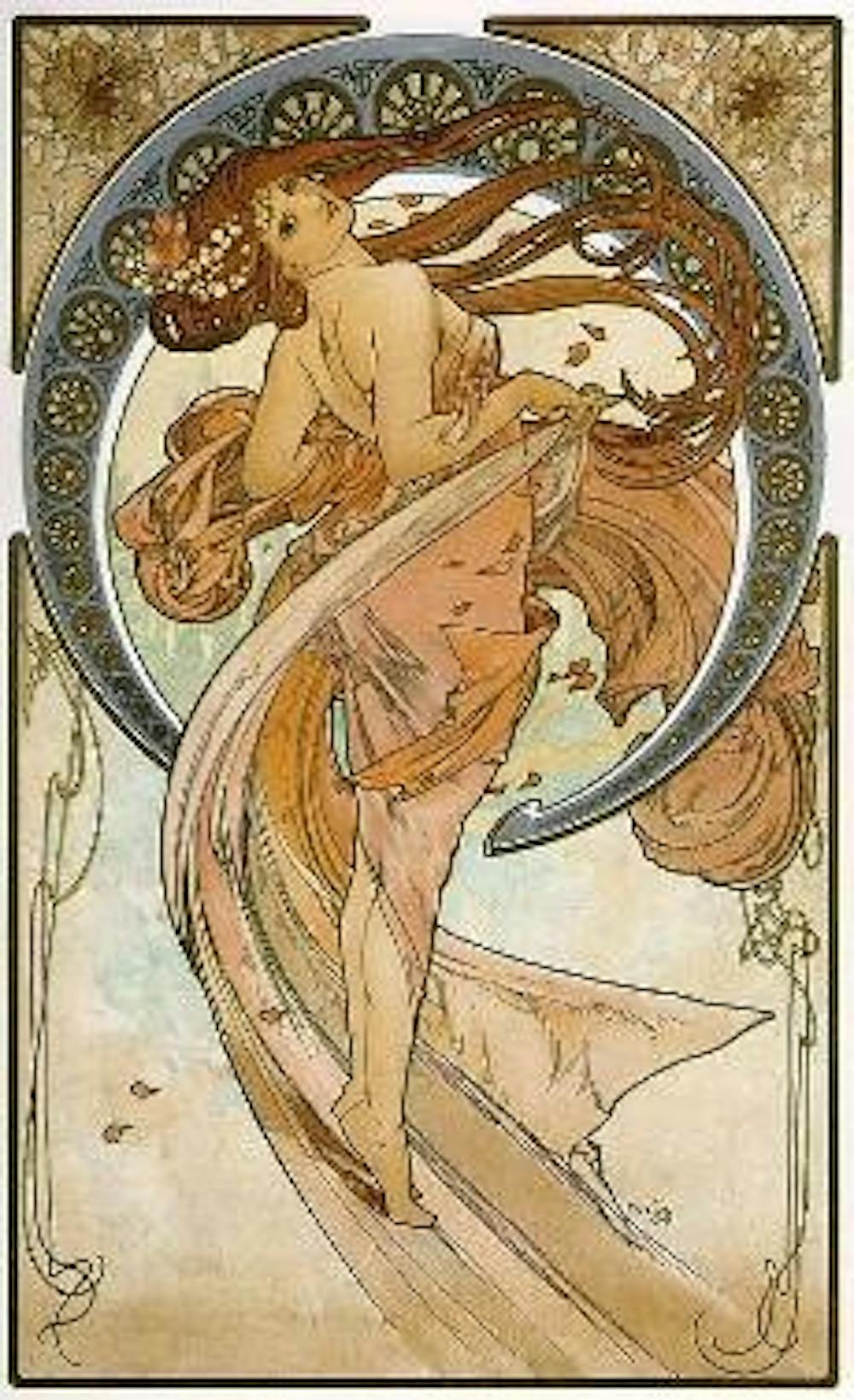How can you deny the brilliance of an art form Surrealist painter Salvador Dalí once accused of possessing a "terrifying and edible beauty"?
According to the Oxford Dictionary of Art, Art Nouveau developed as a style of architecture and decorative arts in the late 19th and early 20th centuries. It could be said Nouveau was a facet of the overarching Arts and Crafts Movement, as it sought to blur the lines between craftwork - furniture, china and other objects associated with daily life - and artwork. Practitioners of Art Nouveau looked to make their surroundings objects of beauty.
Known by nearly 20 other names throughout the world, Art Nouveau was a global style that incorporated organic forms and Japanese-style line work. Popular International Expositions in Paris in 1900 and Turin in 1902 drew the world's eye to the style.
It is difficult to really define Art Nouveau style as a whole since so many artists and artisans embodied the ideals and general influence of the approach. It's probably best to break down Nouveau into the countries it was most popular in and their most famous artists.
Britain's most famous Art Nouveau artist was arguably Aubrey Beardsley. Beardsley was an illustrator and writer whose drawings took the lessons of Japanese woodcut to heart. He was known as a bit of a firebrand, and his work was often sexual. Using beautiful, wavering organic lines, he created strong black and white compositions.
Victor Horta, according to the Oxford Dictionary of Art, was the father of Belgian Art Nouveau, or, as the Belgians called it, "Style coup de fouet"-whiplash style. The sharp, sweeping curves of Horta's architectural masterpieces give you some idea why the Belgians called it that.
Though actually Czech, Alphonse Mucha was active in France during this period and is perhaps one of the most well-known artists of that time. Mucha used complex interlocking linework and sherbet colors in his often Byzantine-inspired illustrations. His subject matter was usually beautiful women. His work was used in labels and advertisements and is therefore some of the most visible and enduring work of this period.
Gustav Klimt, known best for calendar and poster favorite "The Kiss," is Austria's most noteworthy Art Nouveau artist. A member of the Vienna Secession movement, his work often includes painted representations of the complex fabric patterns created by his colleagues. Much of his work tackles themes of sexuality and intimacy.
By no means is this a comprehensive listing of the style's masters. Nouveau was so popular at the time of its practice that it made its way into commercial packaging, architecture and truly into every day life. It definitely achieved its goal of making the everyday beautiful.
Perhaps the best example of Art Nouveau in D.C. is in the National Gallery of Art Sculpture Garden located at Seventh Street and Constitution Avenue N.W. on the National Mall. There, one of French architect Hector Guimard's "Entrance to the Paris Métropolitain" welcomes visitors to the garden. According the gallery's Web site, 86 of these entrances still stand in Paris and are now considered historic sites. If that's not enough for you, the National Gallery offers an online Art Nouveau tour at www.nga.gov/feature/nouveau/exhibit_audio.shtm.





